
views
Testing the Bathroom Scale
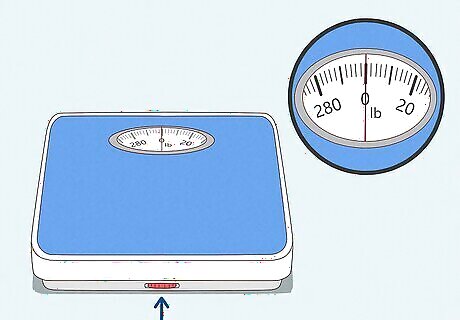
Zero out the scale. Sometimes, the scale needs to be zeroed out to be accurate. This can be done in two ways, depending on the scale you have. If you have an analog scale, press down on the scale with your hand and then lift up. The dial should level out to zero. If it doesn't, use the turn wheel, usually located at the bottom of the scale or near the dial, to move the dial of the scale to zero while it's resting. Test it again to ensure it is at the right place. If you have a digital scale, follow the same procedure as with an analog except the balancing will be done with a digital button instead of a turn wheel. EXPERT TIP Michele Dolan Michele Dolan Certified Fitness Trainer Michele Dolan is a BCRPA certified Personal Trainer in British Columbia. She has been a personal trainer and fitness instructor since 2002. Michele Dolan Michele Dolan Certified Fitness Trainer Did You Know? Older spring dial scales can lose accuracy over time because the springs stretch out or shrink. Modern digital scales are considered very accurate and are the best choice for most people as they are available in many styles and at various price points."
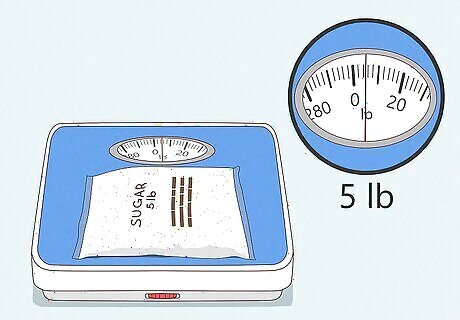
Weigh a familiar object. One way to check the accuracy of your bathroom scale is to test an object that you already know the weight of. It needs to be large enough to register on your scale but small enough that you can carry it to the scale. Try something like a new, unopened bag of flour or sugar. These generally are five to ten pounds and should be a consistent weight. The weight of the paper or plastic bag these things come in shouldn't mess with the weight. If the flour or sugar comes in a heavy sack or metal container, you won't get an accurate reading and you should try another object. You can also try hand weights. The weight of these objects will be written on the side. Test to see if they are the weight they say they are.
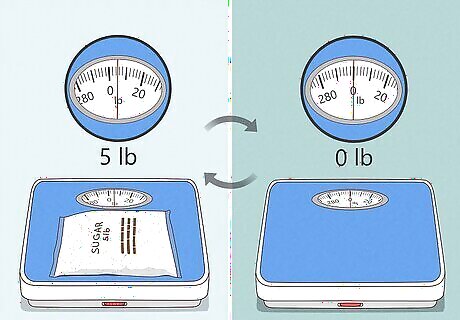
Reweigh an object multiple times. Another way that a scale may be inaccurate is across multiple weigh ins. Take an object you know the weight of, such as a hand weight or bag of sugar. Place it on the scale and note the weight. Take the object off and let the scale return to zero. Place the object on the scale again. Note the weight again. Repeat this at least five times to make sure that the scale in consistent over multiple weigh ins. You can weigh the object more if you get inconsistent results. Just make sure you do it an odd number of times so you can't have split results.
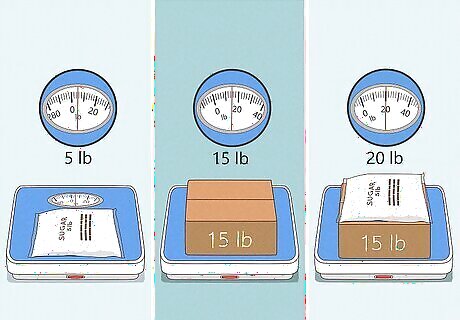
Weigh two objects together. Another way to make sure that a scale is accurate is to check the weight of two objects together. This will typically give you a larger amount of pounds, which will help test the scale at a higher level. It will also test the accuracy of the scale with an uneven weight distribution, which can be helpful for when you weigh yourself, since sometimes you might not stand with your weight 100% balanced. Place one object on the scale. Note the weight. Take it off and let the scale even back out. Place another object on the scale and note its weight. Take it off and let the scale even back out. Now, place the two objects on the scale together. Note the combined weight. Add together the weight of the objects and see if it matches the weight the scale told you of them together. If it matches, the scale is accurate. If it doesn't, try it again and see if it is off by the same number. If it is, it might be that your scale is always off by that amount.
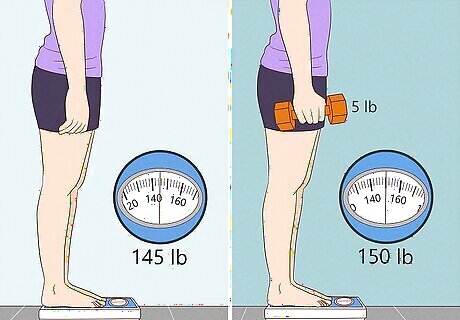
Weigh yourself while holding an object. You can also try stepping on the scale alone, noting the weight, and then stepping on the scale with an object that weighs X amount of pounds, like a 5 pound dumbbell or a 1 pound bag of flour. Then, check to see if the weight goes up by the exact amount that you are holding. If it does, then the scale is accurate. For example, if you step on the scale and it says 145, then it should go up to 150 when you step on again while holding a 5 pound dumbbell.
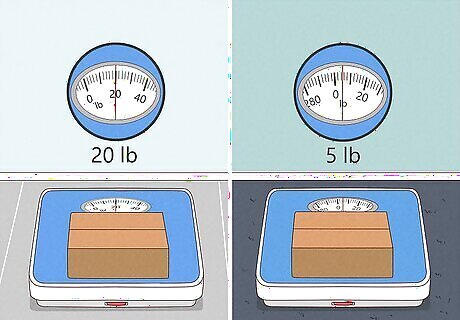
Change the location of the scale. A scale can be affected by the surface it sits on. The best surface for a scale is a hard surface such as a flat bathroom or kitchen floor. It may be cushioned too much by carpet or other soft surfaces, which can make the scale off balance and give you inaccurate readings. Weight an object or yourself in the location you have your scale. Clear the scale and then move it to a different, more stable location. Weigh the same object again. The object should weigh the same. If it doesn't, one of the locations is causing inaccurate readings. Do a test with an object of known weight to see which one is accurate. Try to keep the scale in the same place every day. This way, even if the scale is slightly off, you should be getting the same error each day. This means that any weight you gain or lose, despite the number not being exactly correct, will still be how much you have gained or lost since your starting point was always the same.
Testing the Kitchen Scale
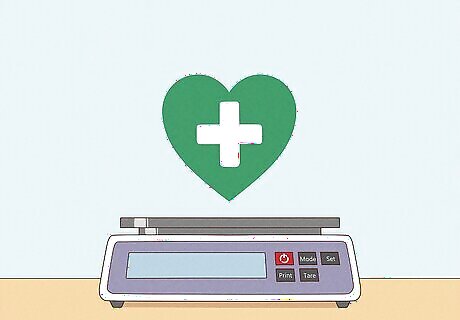
Learn why accuracy matters. Kitchen scales weigh substances on a much smaller basis than bathroom scales. Their accuracy, however, is still important to weight loss. Measuring food is an integral part of many diet plans and will help you track your calorie intake better. Since the substances weighed on a kitchen scale are so light, it can be tricky to test its accuracy. Kitchen scales are also extremely helpful for recipes and cooking.
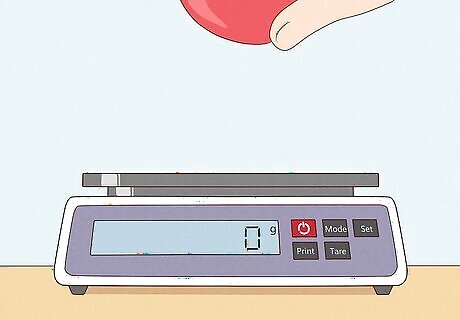
Perform a taring check. To make sure your digital kitchen scale begins at zero, you need to perform a taring test. This will show you whether or not your scale starts its measurements at zero. Turn on the scale. It should start at zero. If it doesn't, press down on the scale gently. Release it and see if it returns to zero. If it doesn't, press the "Tare" button on the scale. This will take the current state of the machine and make it base zero. To test that the taring process works, take an object such as an apple and place it on the scale. Once the scale finds its weight, take note of the weight and then hit the tare button to make it zero. Once it balances, lift the object off the scale. The number that remains, which will be negative, should match the number you measured before.
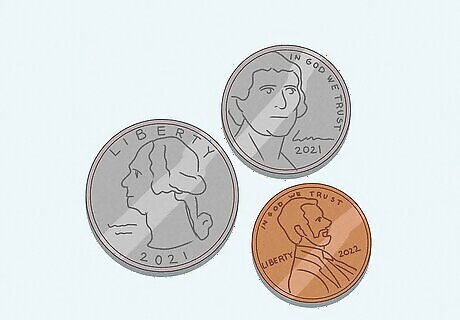
Collect pocket change. Now that you know the scale is balanced, you need to check its weighing capabilities. Some of the smallest and easiest things to weigh are coins. Each coin has a specific weight and are very small, which will help you check the accuracy of small amounts of weight. Collect a few pennies, a few nickels, and a few quarters. These will help you figure out how accurate your machine is, depending on how specific it measures. Try to find newer change if possible. Older coins may have degraded over time and not be an accurate size.
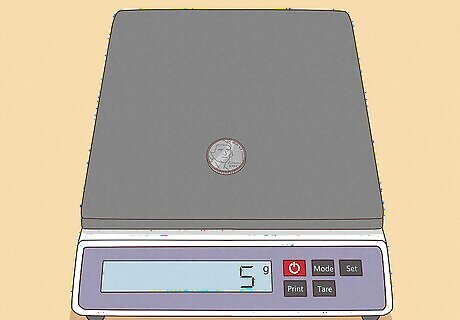
Test a scale that rounds to the nearest gram. If your kitchen scale rounds to the nearest gram, you should use the nickel. Each nickel weighs five grams. Turn on your scale and make sure it is on zero. Place one nickel on the scale and note the weight. Place another nickel on the scale and note the new weight. Place one more nickel on the scale and note the weight. If your scale is accurate, the weight should have gone up by 5g each time. If it is not, try with another nickel than the one that gave you the off reading. That nickel may be older and degraded. If it is still off, the scale is likely inaccurate.
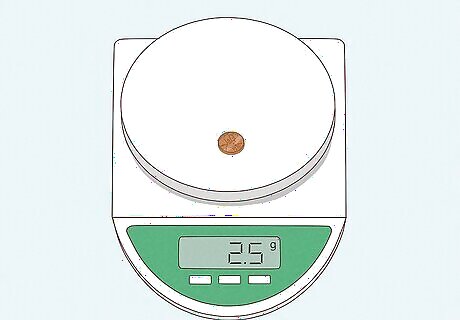
Check a scale that measures tenths of grams. Some scales are so accurate they can measure amounts as small as a tenth of a gram. If your scale does, use the pennies to check the accuracy because they weigh 2.5 grams (0.09 oz) each. Turn on the machine and make sure it is at zero. Place one penny on the scale and note the weight. Add two more pennies, noting the weight in between each one. The weights should be 2.5g, 5g, and 7.5g. If your reading is off, try a different penny than the one that gave you the wrong weight. If the weight it still off, your scale is likely inaccurate.
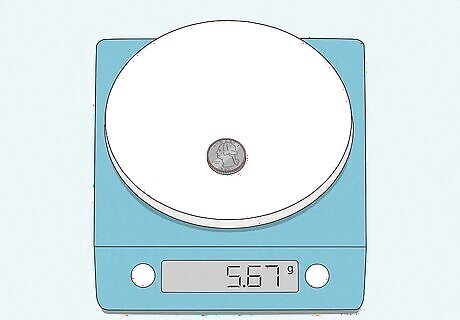
Perform a test on a precise scale. There are some kitchen scales that are extra precise and measure to the hundredths of grams. For these machines, you need to use a quarter, which weighs 5.67g. Place one quarter on the scale and check the weight. Place another on it and check the weight. Two should be enough for this scale since all three places can be read for both weights. The weights should measure 5.67g and 11.34g. If they don't, your scale is likely inaccurate.




















Comments
0 comment